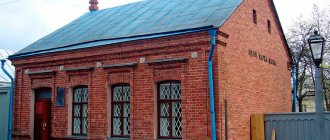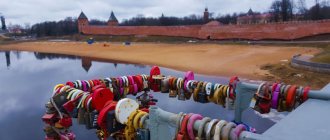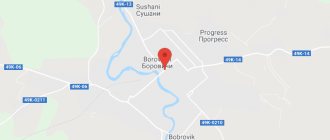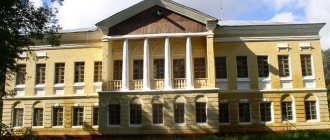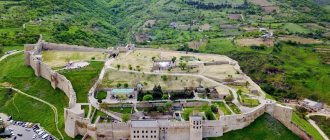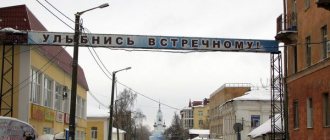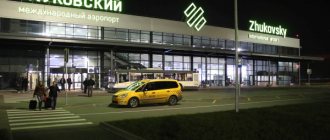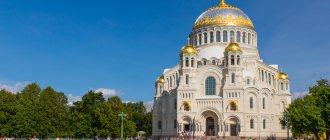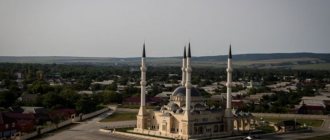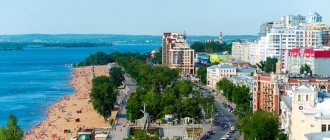- August 20, 2018
- Attractions
- Yana Umyantseva
Yakutsk is the largest city located in the permafrost zone. It is the capital of the Sakha Republic. According to the latest data, over 300 thousand people live on its territory. What sights of Yakutsk are of interest to tourists? The answer to this question can be found in the article.
Sights of Yakutsk: monument to the Mother
Where to start getting acquainted with this settlement? What sights of Yakutsk deserve attention first of all? The Mother Monument is a kind of visiting card of the city. The grand opening of the monument took place in 2012.
The sculpture is located in the picturesque Mother's Square. On the tetrahedral trapezoidal pedestal you can see the figure of a woman sculpted from bronze. It is implied that this is an image of Mother Motherland. She is dressed in national clothes and holds a child in her arms. One of the woman’s hands is extended upward, and three falcons soar upward from her palm. Birds symbolize protective sons. The statue weighs about three tons and is five meters high.
Bust of Hero of the Soviet Union K.K. Krasnoyarov
Monument - bust of Hero of the Soviet Union Krasnoyarov K.K. was installed on May 8, 1995.
Sculptor – Pavlov M.K.
Claudius Karpovich Krasnoyarov
(May 30 [June 12] 1907 - September 23, 1943) - participant in the Great Patriotic War, rifleman of the 1181st Infantry Regiment of the 356th Infantry Division of the 61st Army of the Central Front, Hero of the Soviet Union (1944), Red Army soldier.
Born on May 30 (June 12), 1907 in the village of Isakovka in a peasant family. Russian by nationality. After finishing primary school, he worked on a collective farm. Since 1931 he lived in Yakutsk, worked in the labor supply department of the Lena River Shipping Association.
In the Red Army since February 1943, and since April of the same year on the fronts of the Great Patriotic War, where Krasnoyarov fought as part of the Bryansk and Central fronts.
On September 23, 1943, the shooter of the 1181st Infantry Regiment, Red Army soldier K.K. Krasnoyarov, in the battle for the village of Bolshaya Listven (now the village of Velikiy Listven, Gorodnyansky District, Chernigov Region), having used up all the ammunition, closed the embrasure of the enemy bunker with his body.
The Hero was buried in the village of Velikiy Listven, Gorodnyansky district, Chernihiv region.
By a decree of the Presidium of the Supreme Soviet of the USSR dated January 15, 1944, for the exemplary performance of the combat missions of the Command to cross the Dnieper River and the courage and heroism shown, Red Army soldier Klavdiy Karpovich Krasnoyarov was posthumously awarded the title of Hero of the Soviet Union with the Order of Lenin and the Gold Star medal.
Monument to the mammoth
What other attractions of Yakutsk should travelers definitely see? The mammoth monument is included in this list. The monument, dedicated to the prehistoric giants who inhabited the Arctic in ancient times, was erected in 1972. Over the years of its existence, it has managed to become an unofficial symbol not only of Yakutsk, but of the entire region.
The prehistoric animal has been recreated in life-size. The base of the monument consists of metal reinforcement. The wool naturally represents tow. In the warm season, the monument plays the role of a fountain. Water jets erupt from the trunk of the beast, raised upward.
By 2007, the monument had become dilapidated. A restoration was carried out, thanks to which the monument regained its former beauty.
Monument-bust of A.M. Kirovich
Installed in 1987 in front of the House-Museum named after. M.K. Ammosov and is associated with his 90th birthday. Yakutsk, st. Ammosova, 3/4.
sculptor P.A. Zakharov.
Maxim Kirovich Ammosov
(December 10 (22), 1897, Khatyryksky nasleg, Namsky ulus, Yakut region - July 28, 1938, Moscow) - Soviet statesman and party leader, an active participant in the struggle for the establishment of Soviet power in Siberia.
Born into the family of Anastasia Leontievna and Kir Vasilyevich Ammosov. Due to the poverty of his parents, from the age of four he was raised by his uncle D. M. Ammosov. He graduated from the Yakut State School, the Yakut Teachers' Seminary, and the Institute of the Red Professorship. In the revolutionary movement since 1916, Bolshevik since 1917. Yakut by nationality.
Together with Platon Oyunsky and Isidor Barakhov, he played a decisive role in the formation of the Yakut Autonomous Soviet Socialist Republic in April 1922. Chairman of the Council of People's Commissars of the YASSR (June 1925 - August 1928), on March 18, 1937, on the instructions of the Central Committee of the All-Union Communist Party of Bolsheviks, he arrived in the capital of Kyrgyzstan, the city of Frunze, where the VIII plenum of the Kyrgyz Regional Committee was held. On March 22, he was elected first secretary of the Kyrgyz regional committee of the CPSU(b). These days, the V Extraordinary All-Kyrgyz Congress of Soviets completed its work, at which, under the direct leadership of Ammosov, the Constitution of the Kyrgyz SSR was adopted. Thus, he stood at the origins of Kyrgyz statehood. In July 1937, at the First Congress of the Communist Party of Kyrgyzstan, he was elected first secretary of its Central Committee.
Natural complex “Kingdom of Permafrost”
We continue the story about the sights of Yakutsk. The list of the most striking of them cannot fail to include the natural complex “The Kingdom of Permafrost,” which is located about 10 km from the settlement.
The exhibitions of the ethnographic museum are located in a spacious glacier cave. The exhibits are dedicated to the culture and life of the indigenous peoples of the North, their mystical rituals. On the territory of the cave you can see a large number of ice sculptures and an interesting paleontological collection. Museum guests are also invited to take part in a traditional cleansing ceremony.
Tourists who have already visited the natural complex are advised to dress warmly. Low temperatures in the glacier can become a source of discomfort and ruin the pleasure of the excursion.
Bust of the first cosmonaut Yu. A. Gagarin
The bust of Yu.A. Gagarin was erected in 1986 in the park near the Cosmos cinema.
Yuri Alekseyevich Gagarin
(March 9, 1934, Klushino, Gzhatsky (now Gagarinsky) district, Western region, USSR - March 27, 1968, near the village of Novoselovo, Kirzhachsky district, Vladimir region, USSR) - Soviet pilot-cosmonaut, Hero of the Soviet Union, holder of the highest insignia of the series states, honorary citizen of many Russian and foreign cities.
On April 12, 1961, Yuri Gagarin became the first person in world history to fly into outer space. The Vostok launch vehicle with the Vostok-1 spacecraft, with Gagarin on board, was launched from the Baikonur Cosmodrome. After 108 minutes of flight, Gagarin successfully landed in the Saratov region, not far from the city of Engels. Starting from April 12, 1962, the day of Gagarin's flight into space was declared a holiday - Cosmonautics Day.
On March 27, 1968, Yuri Gagarin died in a plane crash near the village of Novoselovo, Kirzhach district, Vladimir region, while performing a training flight on a MiG-15UTI aircraft under the guidance of experienced instructor V.S. Seryogin. The causes and circumstances of the plane crash remain unclear to this day.
Exhibition “Treasury of the Republic of Sakha”
Yakut diamonds are in great demand in our country. This city is deservedly considered the diamond capital of Russia. This can hardly be surprising, since it is on the territory of the Republic of Sakha that 90% of the most valuable minerals are mined.
Tourists who want to see the famous Yakut diamonds with their own eyes should definitely visit the exhibition “Treasury of the Republic of Sakha”. Other exhibits are also of interest: luxurious furs, mammoth tusks decorated with precious stones and metals, native gold. The exhibition is held at: Kirova, 12.
Bust of the founder of the Cheka F. E. Dzerzhinsky
Bust of F.E. Dzerzhinsky was installed in 1987 on Dzerzhinsky Street, 8.
Historical monument of regional significance.
Author K.D. Pshennikov - Honored Artist of the Republic of Sakha (Yakutia), People's Artist of Yakutia, member of the Union of Artists of Russia since 1965.
Dzerzhinsky Felix Edmundovich
(1877–1926) – participant in the Polish and Russian revolutionary movement, Soviet, party and statesman. The son of a small nobleman in his youth became involved in revolutionary activities, organized the Social Democratic Party of the Kingdom of Poland and Lithuania, in 1903, together with his party, joined the ranks of the RSDLP, in 1907 he became a member of the Central Committee of the RSDLP, and from March 1917 - a member of the Moscow Committee of the RSDLP and the Executive Committee of the Moscow Council, was introduced into the Secretariat of the Central Committee. In the 1910s After serving the tsarist hard labor, Dzerzhinsky was exiled to Yakutia, but on the way he managed to escape.
During the October Revolution, a member of the Military Revolutionary Center of the Military Revolutionary Committee, a delegate to the 2nd All-Russian Congress of Soviets, was elected a member of the All-Russian Central Executive Committee. From November 1917 - member of the NKVD board, from December 1917 to February 1922. - Chairman of the Cheka, from March 1919 to July 1923. - People's Commissar of Internal Affairs and Chairman of the Military Council of the VOKhR troops, and from November 1920 - of the VNUS troops. Since February 1920 - Chairman of the Committee on General Labor Service. During the war with Poland in 1920, he was the head of the rear (he headed the “protection of the revolutionary order”) and a member of the Provisional Revolutionary Committee of Poland and the Polish Bureau of the Central Committee of the RCP (b), after the defeat, chairman of the commission to develop measures to strengthen the protection of the state border. In 1921–1924 - People's Commissar of Railways and at the same time chairman of the commission to improve the lives of children (fighting homelessness), in 1922–1926. - Chairman of the GPU-OGPU, at the same time since 1924, Chairman of the Supreme Economic Council of the USSR. Member of the Central Committee and Central Control Commission of the All-Union Communist Party of Bolsheviks, since 1921 member of the Organizing Bureau of the Central Committee, since 1924 candidate member of the Politburo of the Central Committee of the All-Union Communist Party of Bolsheviks, member of the Central Executive Committee of the USSR. Died 1926
• The name of F. E. Dzerzhinsky was given to cities, villages of the Soviet Union, a number of plants, factories, ships and other objects. Monuments and busts of “Iron Felix” appeared on city streets. His name was given to streets and squares, schools and institutes.
• In 2013, 1,342 squares, streets, avenues and alleys in Russia are named after Dzerzhinsky. In Ukraine, the city of Dneprodzerzhinsk is named after Felix.
Sports complex "Triumph"
What to see in Yakutsk? The Triumph sports complex is considered the architectural pearl of the capital of the Sakha Republic. The grand opening of this colorful building took place in 2012.
The building, erected on stilts, embodies the features of a futuristic style, so it seems to come from the future. The sports complex can simultaneously accommodate over 3,000 spectators. Local residents and tourists have already loved taking pictures against the backdrop of the building.
Attractions in the surrounding area
Kingdom of permafrost
Address: Mount Chochur-Muran Phone: +7 914 272‑71-10 Opening hours: 10:00-20:00 How to get there: 5 km from Yakutsk along the Vilyuisky tract Cost: children - 250 rubles, students - 300 rubles, adults - 400 rubles, video shooting - 100 rubles
The tourist complex is located inside a real glacier. A team of professional sculptors worked on the exhibition: here are ice figures, the hall of Chyskhaan, the lord of the permafrost, and the room of the master of the North, who could transform ice figures into living creatures.
Most of the exhibits are dedicated to the characters of Yakut mythology: the Tree of Life, the upper, middle and lower worlds, the spirits of hunting, fire, and hearth. Visitors also have the opportunity to visit the ice hotel and ice bar.
In winter, the temperature in the cave is -10 degrees Celsius, and in summer - only -5 degrees.
Yakut Zoo Orto Doidu
Address: Khangalassky ulus, Pokrovsky tract How to get there: 50 km from Yakutsk by bus No. 202 (Yakutsk-Mokhsogolloh), fare - 160 rubles, children's fare - 80 rubles Website: https://zoo.ykt.ru Opening hours: Mon-Fri 10:00-19:00, Sat, Sun 10:00-20:00 (summer); Mon-Sun 10:00-17:00 (in winter) Cost: adults - 250 rubles, children - 200 rubles
The zoo was founded in early 2001, although the idea of its creation came from the first president of the Republic of Sakha (Yakutia) several years earlier.
Keeping animals and building suitable enclosures was complicated by the climatic conditions of the region and permafrost. No one had experience setting up a zoo in such conditions.
The Yakut Zoo does not seek to increase the number of animal species. The main task is to preserve the existing gene pool.
From the Orto Doidu Zoo, animals are sent to zoos in other Russian cities.
The Yakut Zoo has strict rules of conduct; for non-compliance, park employees may refuse entry.
Kuruluur waterfall
Where is it located: 80 km from Yakutsk How to get there: by car along the M-56 highway, then along a dirt road Travel time: 2 hours
Kuruluur is a low waterfall on the Menda River. The river itself flows into the Lena.
The water here is cool, but you can swim. This is a popular place among locals and tourists, so you shouldn’t expect a quiet, secluded holiday.
Near the waterfall there are several more Yakut attractions: the Buluus glacier, the Kysyl Syyr water park, the Samartai valley, the Turuuk Khaya rock.
Wood bison nursery Ust-Buotama
Where is it: Khangalassky ulus, cape at the confluence of the Lena and Buotama rivers How to get there: by car to the Ust-Buotamskaya recreation center in the village of Yuryakh-Terdyo, 114 km from Yakutsk Travel duration: 2.5 hours Booking tours: 8 (41144) 45-2-89, 8984-119-20-36
The nursery appeared in the 2000s on the basis of the Lena Pillars National Park. The main task was the revival of the wood bison population.
These animals lived in Siberia in ancient times, but about 5 thousand years ago almost all became extinct. The remaining individuals moved to North America.
The first inhabitants of the nursery were donated by the Canadian Wood Buffalo Park. At first there were only 30 bison, but within a few years the number grew to two hundred.
It is dangerous to move around the nursery on your own; you must visit the park with a guide and along special hiking trails.
Interesting museums
What other attractions are located on the territory of the capital of the Sakha Republic. What other interesting things can you see in Yakutsk? The Mammoth Museum is a place where guests of the locality should definitely visit. His address: st. Kulakovsky, 48.
The Mammoth Museum is interesting because it has no analogues not only in our country, but throughout the world. The exhibition contains over 1.5 thousand artifacts that are dedicated to these prehistoric animals. Parts of skeletons, tusks, life-size reconstructions - all this can be seen in the museum. The age of many exhibits is 8-9 thousand years. Museum guests will not only be able to admire the original collection, but also take part in a master class. They will master the basics of mammoth bone carving.
The Museum of the Peoples of the North, located on Lenin Avenue, is also worth a visit. The history of this institution began back in 1891. Visitors will be able to see exhibits dedicated to the life and culture of indigenous peoples. They will learn a lot about their traditions and rituals. Part of the collection is dedicated to the mineral wealth, flora and fauna of this region. Among the exhibits you can find a stuffed Amur tiger, skeletons of a bowhead whale and a mammoth.
The National Art Museum is also worth visiting. Its address: Kirova, 9. It dates back to 1928. Initially, the museum owned only 19 paintings; these were works by Korovin, Polenov, and Makovsky. Over the past years, the number of exhibits has increased significantly; now there are several thousand. Of greatest interest are the collections of works by local bone carvers, authentic embroidery, and fur mosaics.
Churches and temples
Gradoyakutsk Transfiguration Cathedral
Address: st. Kirova, 3 Opening hours: 08:00-20:00
The temple was built in the mid-19th century with the money of merchant Mikhail Solovyov. After Soviet rule, the cathedral was returned to the Yakut diocese in the form of ruins. It was restored in 2001.
The temple is not only a key religious site in Yakutia, but also the custodian of revered shrines. Among them: the icon of the Intercession of the Most Holy Theotokos with pieces of her clothing, the “Life-Giving Spring” icon, the Sovereign icon of the Mother of God and others.
In 2010, the icon “The Tsaritsa” was brought to the cathedral. It was written specifically for the Yakut temple on the sacred Mount Athos. To create the icon, the bark of the Mauryan oak was used as the basis.
Gradoyakutsk Nikolsky Church
Address: st. Oktyabrskaya, 31 Phone: +7 (4112) 36–58–92 Opening hours: 08:00-19:00
The wooden temple was built at the beginning of the 18th century. A few decades later, the structure collapsed, and local residents began to build a stone church. There were not enough funds, so construction continued for more than 30 years.
In the 20s of the twentieth century, representatives of the intelligentsia, nobility, merchants, and clergy were shot on the territory of the temple.
St. Nicholas Church suffered the least damage during the Soviet era. By the mid-90s, it was completely restored and services resumed.
Spiritual Center - Muslim religious organization
Address: st. Pirogova, 4 Telephone: Opening hours: 09:00-19:00
Attempts to build a mosque in Yakutsk were made back in 1914. But the First World War and then the revolution prevented these plans.
A Muslim spiritual center appeared in Yakutsk only in 2005. At the mosque there is a madrasah, a religious goods store, and a library.
The first Yakut Muslims were the Bashkirs and Tatars, who came to these lands with the first Russian settlers. Today in Yakutia there are about 100 thousand representatives of Islam.
Archa's house
What other attractions of the city of Yakutsk were not mentioned. Archa's house is located at Chernyshevsky, 24. Visitors to this spiritual center have the opportunity to take part in religious holidays and rituals. The indigenous population of the Republic honors the beliefs of their ancestors and ancient traditions. Archa's house is always popular.
Not only religious events take place on the territory of this building. Exhibitions of works of decorative and applied art and folklore festivals are also held here. The building itself is also interesting, as it embodies the features of the national style. Sacred totems can be seen in front of the entrance.
Bust of A.S. Pushkin
Bust of A.S. Pushkin was opened on June 6, 2000 in a small park near the Russian Drama Theater named after A.S. Pushkin on Lenin Avenue.
Author Orekhov Yuri Grigorievich (April 20, 1927—July 18, 2001) - sculptor, People's Artist of Russia (1988), laureate of the Lenin (1984) and State Prizes of the USSR (1982), full member of the Russian Academy of Arts (1995), honorary member of the Academy of Fine Arts city of Carrara (Italy, 1989).
Alexander Sergeevich Pushkin
(1799 - 1837) - the greatest Russian poet and writer, prose writer, playwright, publicist, critic, founder of new Russian literature, creator of the Russian literary language.
The origin of Alexander Sergeevich Pushkin comes from the branched, untitled noble family of the Pushkins, which, according to genealogical legend, dates back to the “honest husband” Ratshe[9][K 2]. Pushkin repeatedly wrote about his ancestry in poetry and prose; he saw in his ancestors an example of a true “aristocracy,” an ancient family that honestly served the fatherland, but did not gain the favor of the rulers and was “persecuted.” More than once he turned (including in artistic form) to the image of his maternal great-grandfather - the African Abram Petrovich Hannibal, who became a servant and pupil of Peter I, and then a military engineer and general.
For tourists with children
Where can tourists with children go in Yakutsk? To begin with, it’s worth taking young travelers to the Chochur-Muran ethnographic complex. His address: 5th kilometer of the Vilyuisky tract. On the territory of the complex you can see wooden mansions in which historical interiors have been painstakingly recreated. There are also many exhibits dedicated to the history of the region, its flora and fauna. Children and adults will be interested in looking at stuffed animals. Young travelers will be able to enjoy interacting with Yakut Laikas and ride a reindeer or dog sled. There is a cafe on the territory of the complex where you can taste national dishes.
The ethnographic is located nearby. It is a wooden manor built in accordance with national traditions. Travelers are greeted by friendly hosts in traditional attire. They talk about traditions and rituals, the way of life of the northern peoples. Tourists will be able to admire the traditional attire of a shaman, as well as taste original dishes.
Where should those who have already been to ethnography go? The Republican Circus is another place where you can take your child. Its address: Poyarkova, 22. It is unique in that it is considered the northernmost circus on the planet. The building it occupies was constructed using special technology. This makes it possible not to cancel performances even in severe frosts. The most interesting part of the show program is the reprises, filled with national flavor.
Yakutsk on the map of Russia
Unfortunately, many Russians, especially those living in the Western European part of the country, still do not know where Yakutsk is located. It seems to them that Yakutia is a republic located somewhere outside the territory of Russia, somewhere beyond Mongolia or China. Let's dispel doubts. On the map of our vast country, Yakutsk is located in the northeast, on the left bank of the largest river in Eastern Siberia - the Lena.
Yakutsk coordinates: 62.03° north latitude, 129.73° east longitude. You can fly from Moscow to Yakutsk in 6.5 hours by plane, and the trip by car will take about one week.

